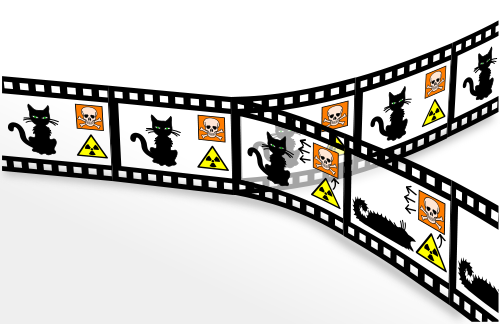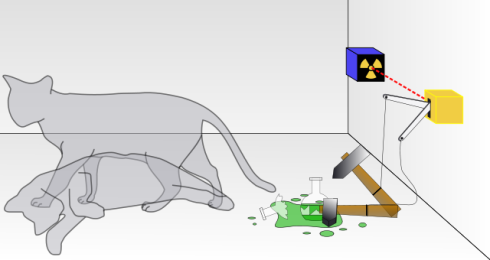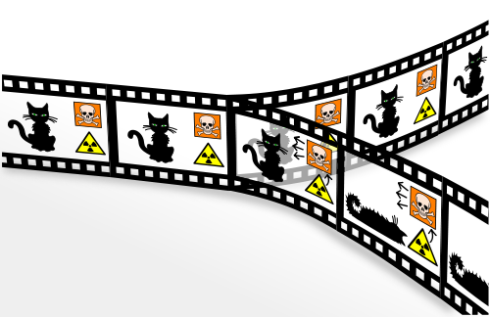Schrödinger’s cat: the quantum world not so absurd after all?


Since Erwin Schrödinger’s famous 1935 cat thought experiment, physicists around the world have tried to create large scale systems to test how the rules of quantum mechanics apply to everyday objects. Scientists have only managed to recreate quantum effects on much smaller scales, resulting in a nagging possibility that quantum mechanics, by itself, is not sufficient to describe reality.
Researchers Alex Lvovsky and Christoph Simon from the University of Calgary recently made a significant step forward in this direction by creating a large system that displays quantum behaviour, publishing their results in Nature Physics.
Understanding Schrödinger’s cat
Quantum mechanics is without doubt one of the most successful physics theories to date. Without it the world we live in would be remarkably different: driving and shaping our modern world making possible everything from computers, mobile phones, nuclear weapons, solar cells and our everyday appliances. At the same time it presents us with conundrums that are at the far end of reason; challenging even the greatest minds to comprehend.
In contrast to our everyday experience, quantum physics allows for particles to be in two states at the same time — so-called quantum superpositions. A radioactive nucleus, for example, can simultaneously be in a decayed and non-decayed state.

visualization of the separation of the universe due to two superposed and entangled quantum mechanical states. (image credit: Christian Schirm)
Applying these quantum rules to large objects leads to paradoxical and even bizarre consequences. To emphasize this, Erwin Schrödinger, one of the founding fathers of quantum physics, proposed in 1935 a thought experiment involving a cat that could be killed by a mechanism triggered by the decay of a single atomic nucleus. If the nucleus is in a superposition of decayed and non-decayed states, and if quantum physics applies to large objects, the belief is that the cat will be simultaneously dead and alive.
Schrödinger’s thought experiment involves a (macroscopic) cat whose quantum state becomes entangled with that of a (microscopic) decaying nucleus. While quantum systems with properties akin to ‘Schrödinger’s cat’ have been achieved at a micro level, the application of this principle to everyday macro objects has proved to be difficult to demonstrate. The experimental creation of such micro-macro entanglement is what these authors successfully achieved.
Photons help to illuminate the paradox
The breakthrough achieved by Calgary quantum physicists is that they were able to contrive a quantum state of light that consists of a hundred million photons and can even be seen by the naked eye. In their state, the “dead” and “alive” components of the “cat” correspond to quantum states that differ by tens of thousands of photons.

While the findings are promising, study co-author Simon admits that many questions remain unanswered.
“We are still very far from being able to do this with a real cat,” he says. “But this result suggests there is ample opportunity for progress in that direction.”
Seeing quantum effects requires extremely precise measurements. In order to see the quantum nature of this state, one has to be able to count the number of photons in it perfectly. This becomes more and more difficult as the total number of photons is increased. Distinguishing one photon from two photons is within reach of current technology, but distinguishing a million photons from a million plus one is not.
Decoherence: the emergence of the classical world from the quantum
Why don’t we see quantum effects in everyday life? The current explanation is that it is to do with decoherence.
Physicists see quantum systems as fragile. When a photon interacts with its environment, even just a tiny bit, the superposition is destroyed. This interaction, could be as a result of measurement or an observation, or just a random interaction. Superposition is a fundamental principle of quantum physics that says that systems can exist in all their possible states simultaneously. But when measured, only the result of one of the states is given.
This effect is known as decoherence and it has been studied intensively over the last few decades. The idea of decoherence as a thought experiment was raised by Erwin Schrödinger, in his famous cat paradox. Unfortunately for non-physicists decoherence only provides an explanation for the observance of wave function collapse, as the quantum nature of the system “leaks” into the environment. It does not tell us where the line is, if one does exist, between the quantum and everyday worlds.
Although Schrodinger’s thought experiment was originally intended to convey the absurdity of applying quantum mechanics to macroscopic objects, this experiment and related ones suggest that it may apply on all scales.
If you are interested in the history and foundation of quantum mechanics then I highly recommend Quantum: Einstein, Bohr and the great debate about the nature of reality, by Manjit Kumar (2009), and The Age of Entanglement: when quantum physics was reborn, by Louisa Gilder (2008). Both are well-researched and captivating brilliant accounts of science science and scientists.
Orrman-Rossiter K (2013-08-02 00:10:37). Schrödinger's cat: the quantum world not so absurd after all?. Australian Science. Retrieved: Jan 07, 2026, from https://ozscience.com/physics/schrodingers-cat-the-quantum-world-not-so-absurd-after-all/
 Follow
Follow
1 thought on “Schrödinger’s cat: the quantum world not so absurd after all?”
Comments are closed.